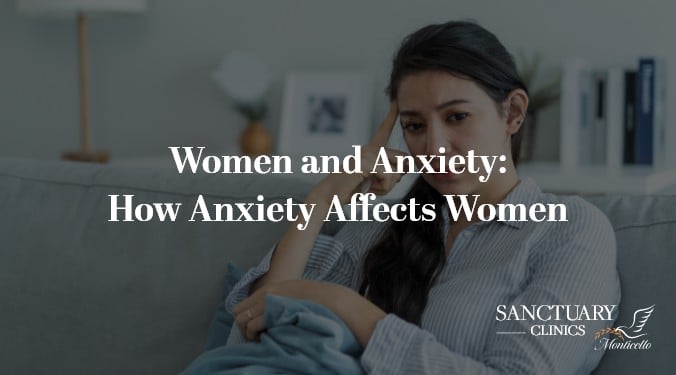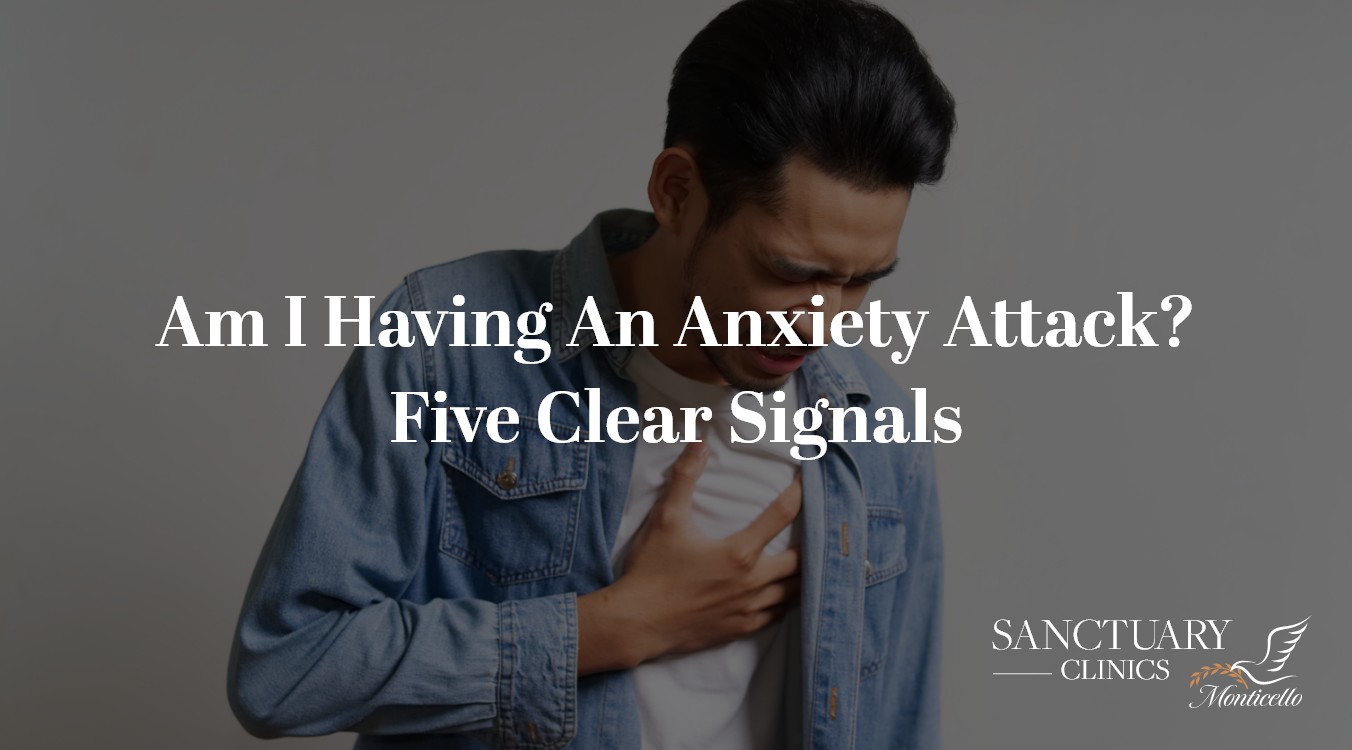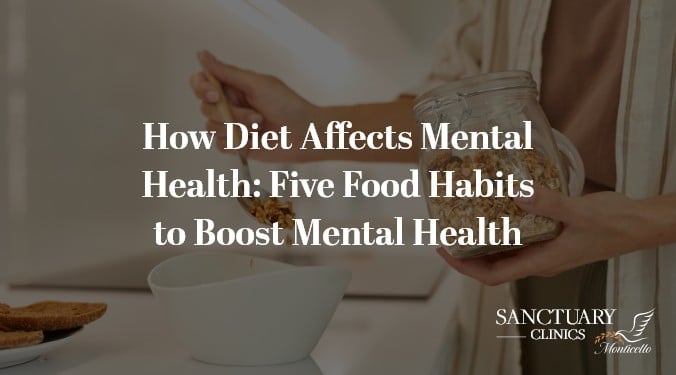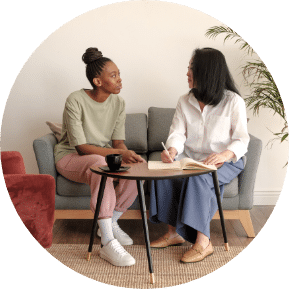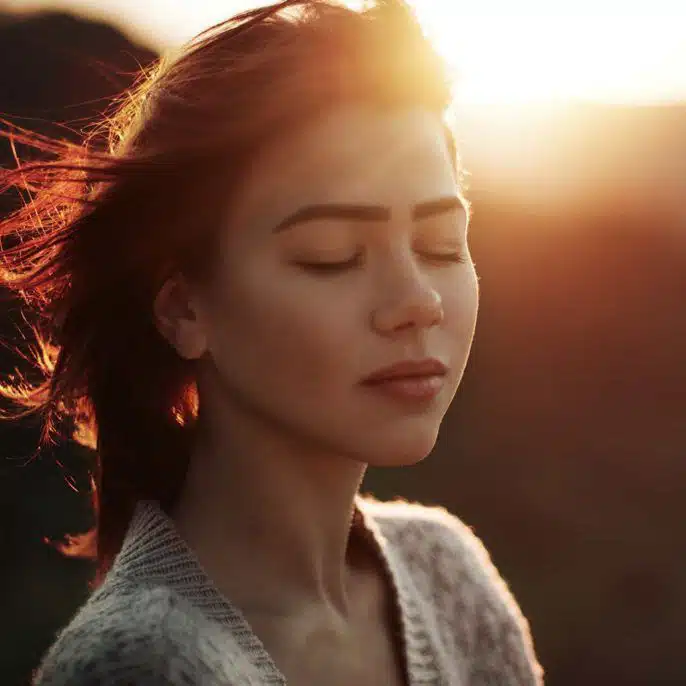Anxiety is an emotion characterized by feelings of tension, worried thoughts, and physical changes. People with anxiety disorders usually have recurring intrusive thoughts or concerns and may avoid situations because they worry about them.
There are different types of anxiety disorders. Research shows women are twice as likely as men to develop an anxiety disorder. (adaa ref) Anxiety can affect women physically, emotionally, and make them avoid certain things and places.
The physical symptoms of anxiety may also include:
- Sweating
- Trembling
- Dizziness
- Rapid heartbeat
- Stomach upset
- Increased blood pressure (American Psychological Association, n.d.
Anxiety Disorders
According to the Diagnostic and Statistical Manual of Mental Disorders (DSM-V), there are several anxiety disorders. These are diagnosed in men and women. However, research has shown women are more likely to have anxiety than men. They are also more likely to suffer from more than one anxiety disorder at the same time, or experience both depression and anxiety. (Guarnotta & Byars, 2022)
The following are other anxiety disorders as found in the DSM-V: (Mental Health UK, n.d.)
- Generalized anxiety disorder (GAD)
This is the most common type of anxiety characterized by the excessive feeling of worry about different activities and events. You feel hyper alert about your surroundings and anxious about what may happen. - Panic disorder
This disorder is characterized by having regular panic attacks. Panic attacks are a sudden and intense feeling of fright, fear, and chest pains, or a feeling of irregular heartbeat, heart attack, dry mouth, shortness of breath, a choking feeling, nausea, dizziness and feeling faint, ringing in your ears, numbness, a churning stomach, and a need to go to the toilet. Panic attacks may happen when you are afraid about a certain situation or are anxious about something, like going outside to meet new people or entering a confined space, like a lift. - Social anxiety disorder
Social anxiety disorder is when you have extreme dread or fear about social situations. This can be the fear of speaking in public, meeting new people, dating, or eating in public. You can feel a racing heartbeat, have a shaky voice or blank mind, and be blushing and sweating. You may fear being judged or begin avoiding social situations all together. - Phobias
This is the overwhelming fear of an object, place, situation, feeling, or animal. There are specific phobias against particular objects, but there are also general phobias. Common examples of phobias are:- Body – blood or being sick
- Situational – going to the dentist
- Environmental – heights and germs
- Animals – spiders, snakes, or rodents
- Sexual – performance anxiety
- Health anxiety
With this anxiety, you may be ill or feel you are about to get ill. There is a constant checking for illness, worrying medical advice and results are inaccurate, obsessively consuming health related information, matching descriptions with your own symptoms, avoiding health related content on the media, and seeking reassurance. It’s important to note anxiety’s physical symptoms might be mistaken for signs of serious illness by those who have health anxiety. - Obsessive compulsive disorder
This is a mental disorder which affects you when you get caught into a cycle of obsessive thoughts and compulsive actions. To keep anxiety at bay, you repeat the actions or compulsions brought about by obsessive thoughts. - Dermatillomania (skin-picking)
This is an impulse control disorder where you regularly pick at your skin and find it difficult to stop. It can result in bleeding, bruising, and scarring. The picking happens mostly on the skin on the face, but the legs, arms, and thighs are other common areas. It could be a type of addiction and may relieve tension and stress. OCD can be comorbid (simultaneously present) with dermatillomania. - Trichotillomania (hair-pulling)
This is another impulse control disorder in which you feel the strong urge to pull out your hair and have difficulty stopping. It can be hair on your scalp, arms, eyelashes, eyebrows, legs, or pubic area. Hair pulling can relieve tension or pressure and it can be difficult to stop. This results in hair loss, distress, guilt, embarrassment, and low self-esteem. - Post-traumatic stress disorder (PTSD)
This is a disorder which develops when you have gone through a traumatic experience. Five out of ten women experience a traumatic event thus putting them at a higher risk of developing PTSD and other anxiety disorders.
The following are anxiety disorders unique to women due to their unique biological set-up which involve hormones particular to puberty, menstruation, menopause, and birth. (Guarnotta & Byars, 2022)
- Anxiety during puberty: There are numerous hormonal changes and stress during puberty. When puberty hits, adolescent girls are more likely to develop anxiety when compared to boys their age.
- Premenstrual dysphoric disorder (PMDD): This is a disorder which involves feelings of anxiety and depression during the week before and during the first few days of menstruation. Women also feel extremely tired, have difficulty concentrating, gain weight, have changes in their appetite, have sore or swollen breasts, or have muscle or joint pain, as well as changes in sleep.
- Prenatal anxiety: This is anxiety experienced during pregnancy due to significant hormonal changes. Approximately 6% of women experience this anxiety. The stress of preparing for motherhood and childbirth also contribute to anxiety during pregnancy.
- Postpartum anxiety: This is anxiety during the first year after giving birth. This anxiety may be accompanied by postpartum depression and affects 10% of women.
- Anxiety during menopause: During menopause, there are several significant hormonal changes. Just like in puberty, women are experiencing unprecedented changes and symptoms like hot flashes and insomnia. These changes make women vulnerable to develop anxiety during menopause.
Further Symptoms of Anxiety
The following are signs and symptoms of anxiety (Anxiety & Depression Association of America, 2021):
- Breathing rapidly (hyperventilation)
- Trembling
- Feeling weak or tired
- Difficulty concentrating or sleeping
- Experiencing gastrointestinal (GI) problems (This could include diarrhea, constipation, bloating and acidic build-up in the stomach)
- Increased heart rate
- Intrusive thoughts and repetitive and compulsive behavior
- Insomnia
- Nausea
- Hot flashes
- Dizziness
- The feeling of fear and dread (Office on Women’s Health, 2021)
- Crying or teariness
- Muscle tension
Causes of Anxiety
Now we know what it may look and feel like to have anxiety, it is important to understand what causes it. There are several combinations of factors researchers have found which cause anxiety. These include:
- Hormonal changes during the menstrual cycle. Hormones produced in the brain affect mood, concentration, emotions, and general outlook. This may lead to developing anxiety.
- Genetics. Anxiety disorders may run in families. This causes you to become predisposed to developing anxiety.
- Traumatic events. If you experienced a harmful event which left you feeling in danger like abuse, or an attack or sexual assault, this can lead to the development of anxiety, post-traumatic stress disorder, and even depression. (Office on Women’s Health, 2021)
- Stress is another cause of anxiety. Girls are more likely to experience stressful events than boys in childhood and are more vulnerable to abuse and neglect. Women are also ten times more likely to experience sexual assault than men. Additionally, due to the rise of the working mother, there are numerous responsibilities women must manage as opposed to men, thus leading to greater stress levels and a higher chance of developing anxiety. (Guarnotta & Byars, 2022)
Anxiety in women
In addition to the symptoms listed above, women with anxiety may find it affects their ability to think clearly, sleep well, and function in different areas of their lives (Guarnotta & Byars, 2022). As mentioned earlier, there are certain factors which make women more vulnerable to anxiety than men. There are significant and statistical differences in the rates women get anxiety as compared to men. This may be because there are more risk factors for anxiety for women.
Risk factors for anxiety refer to the experiences which make it more likely for women to develop anxiety. These include:
- An avoidant coping style. This refers to your propensity to avoid rather than to face negative emotions. For example, avoiding going into tall buildings because you are afraid of getting a panic attack in a tall building and because of your fear of heights.
- Diagnosis of polycystic ovarian syndrome (PCOS)
- History of physical, emotional and sexual abuse. We have already established women are at a higher risk of being abused and this sets them up even further to develop anxiety.
- A poor support system. This is particularly important when dealing with a difficult upbringing, trauma, or economic challenges. Without this support, anxiety can develop because there are less deterrents or sources for reassurance.
- Family history of anxiety. Genetics, and an upbringing around people with anxiety may lead to the development of anxiety as well.
Even though certain risk factors may increase the likelihood of anxiety, protective factors can decrease a person’s risk. Developing a secure attachment, finding a good support system, and maintaining a healthy, balanced diet and exercise regime, can reduce your likelihood of developing anxiety.


